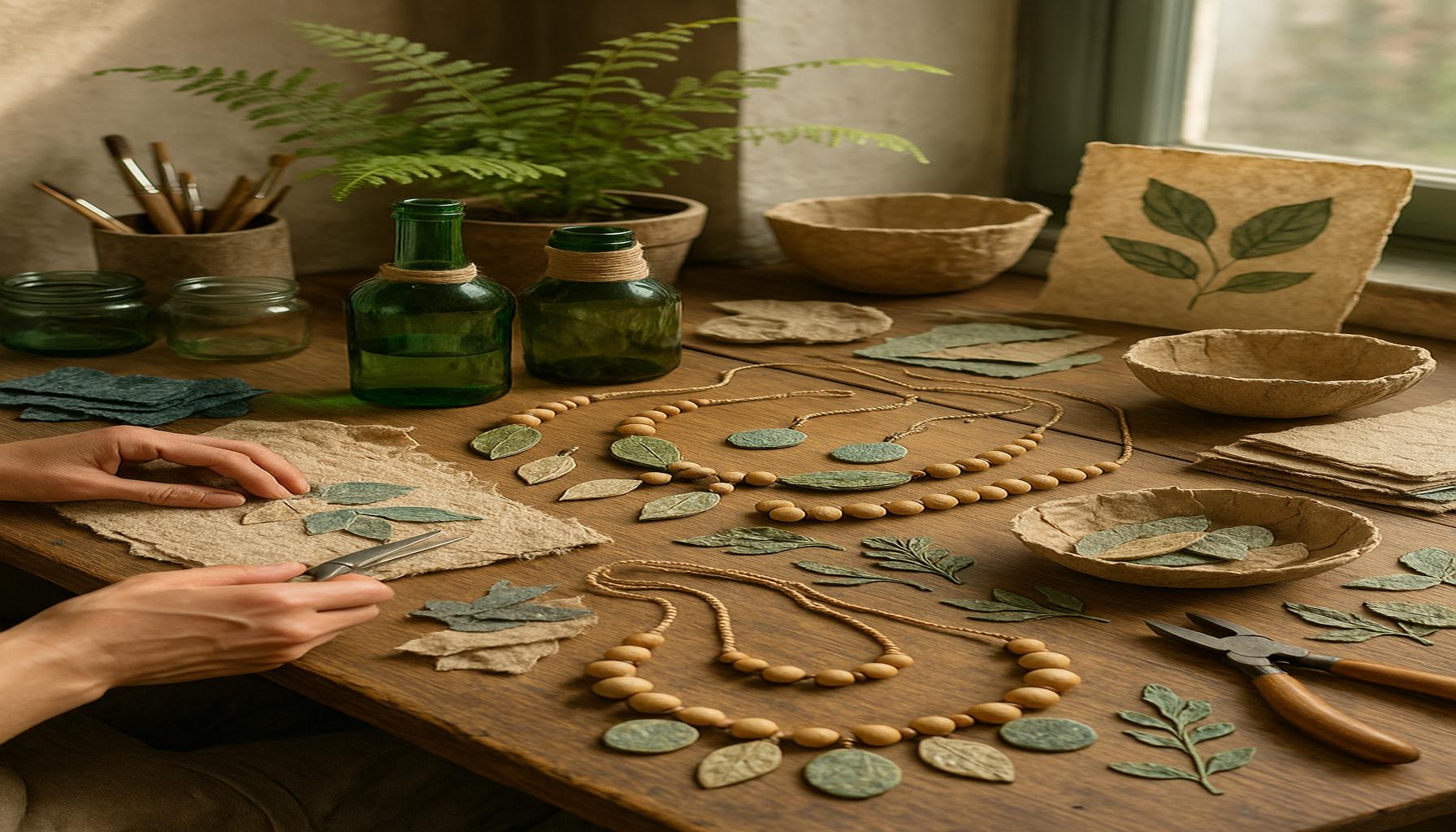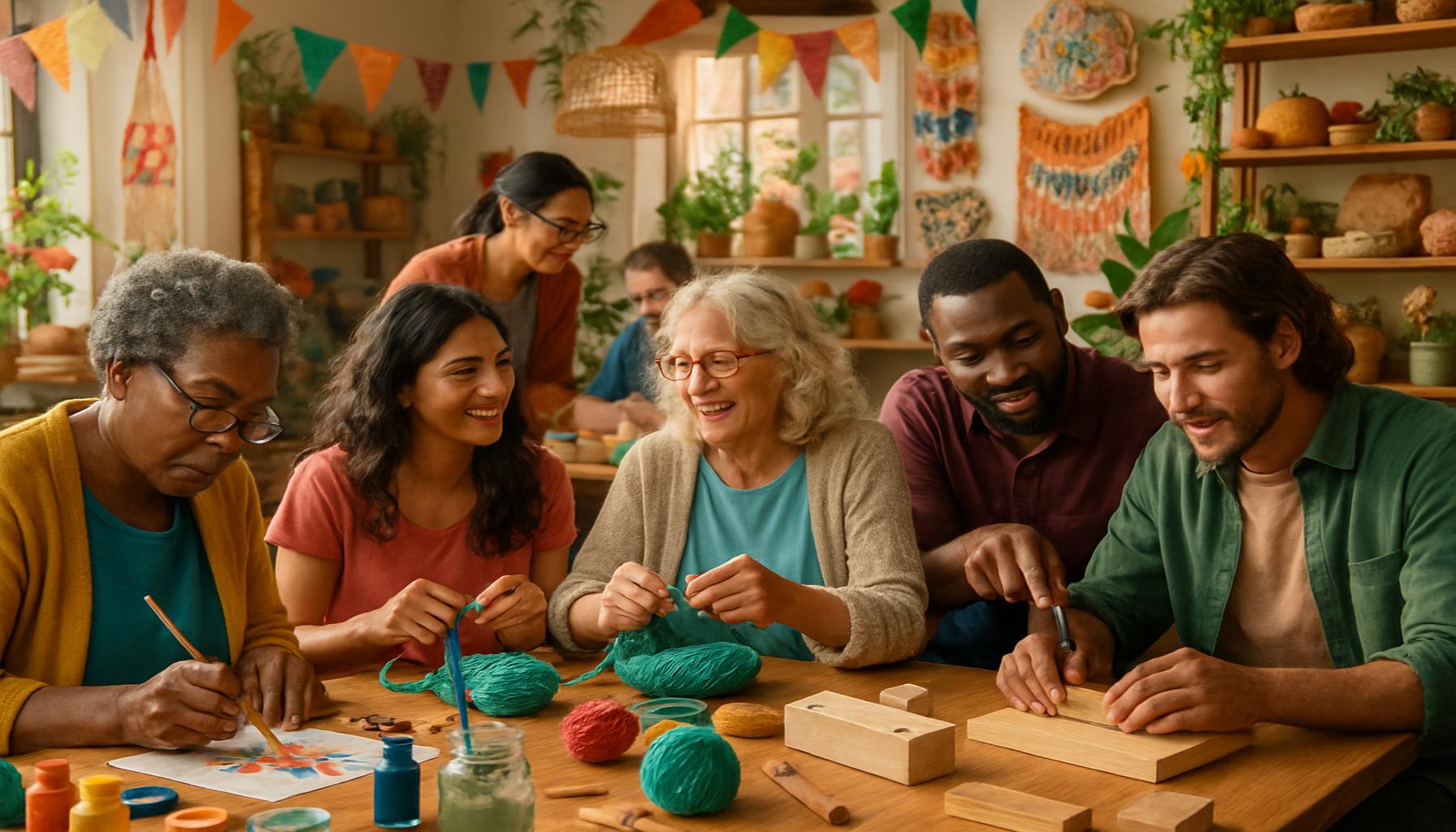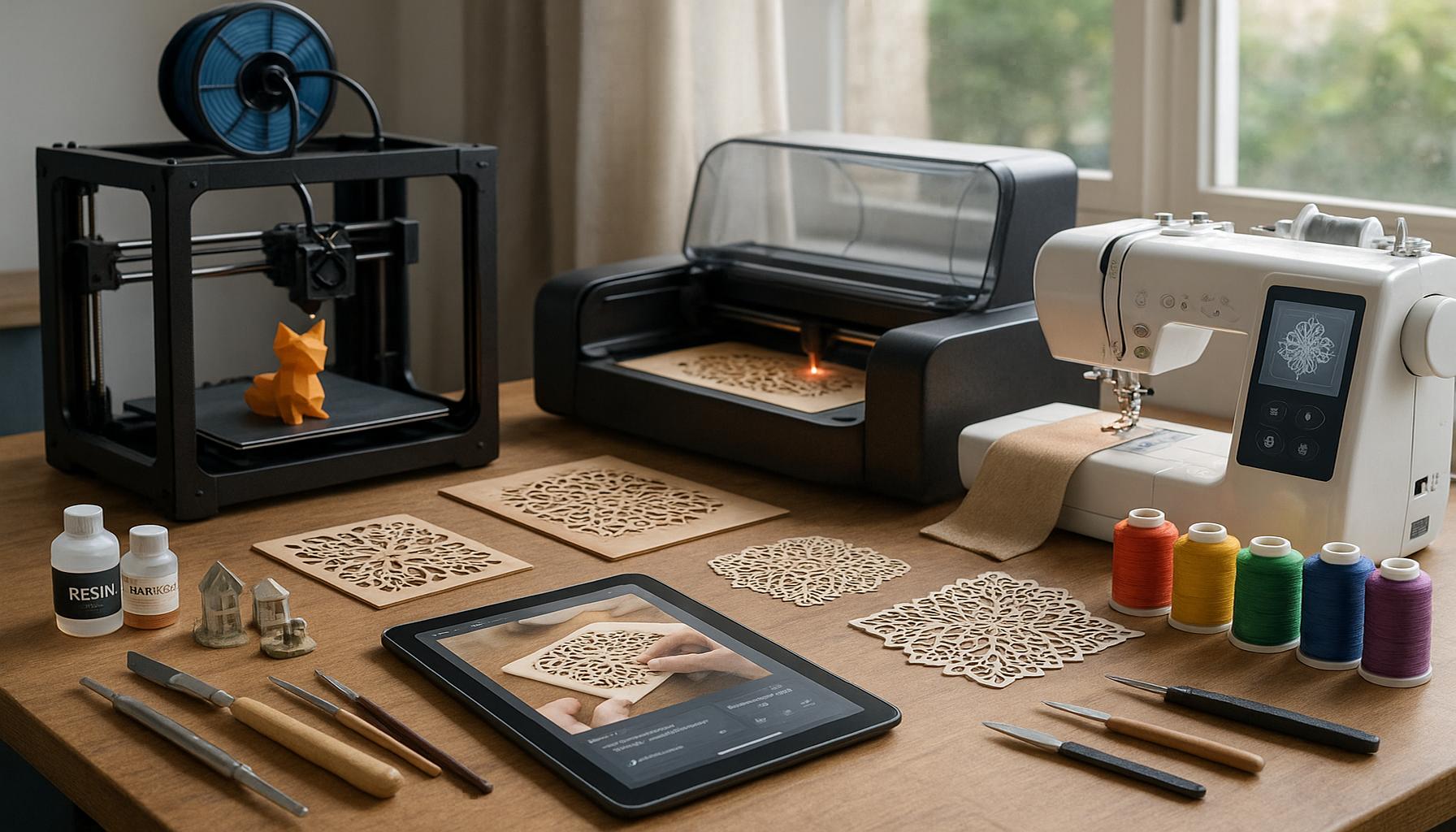Craft Techniques for Stress Relief and Relaxation Therapy
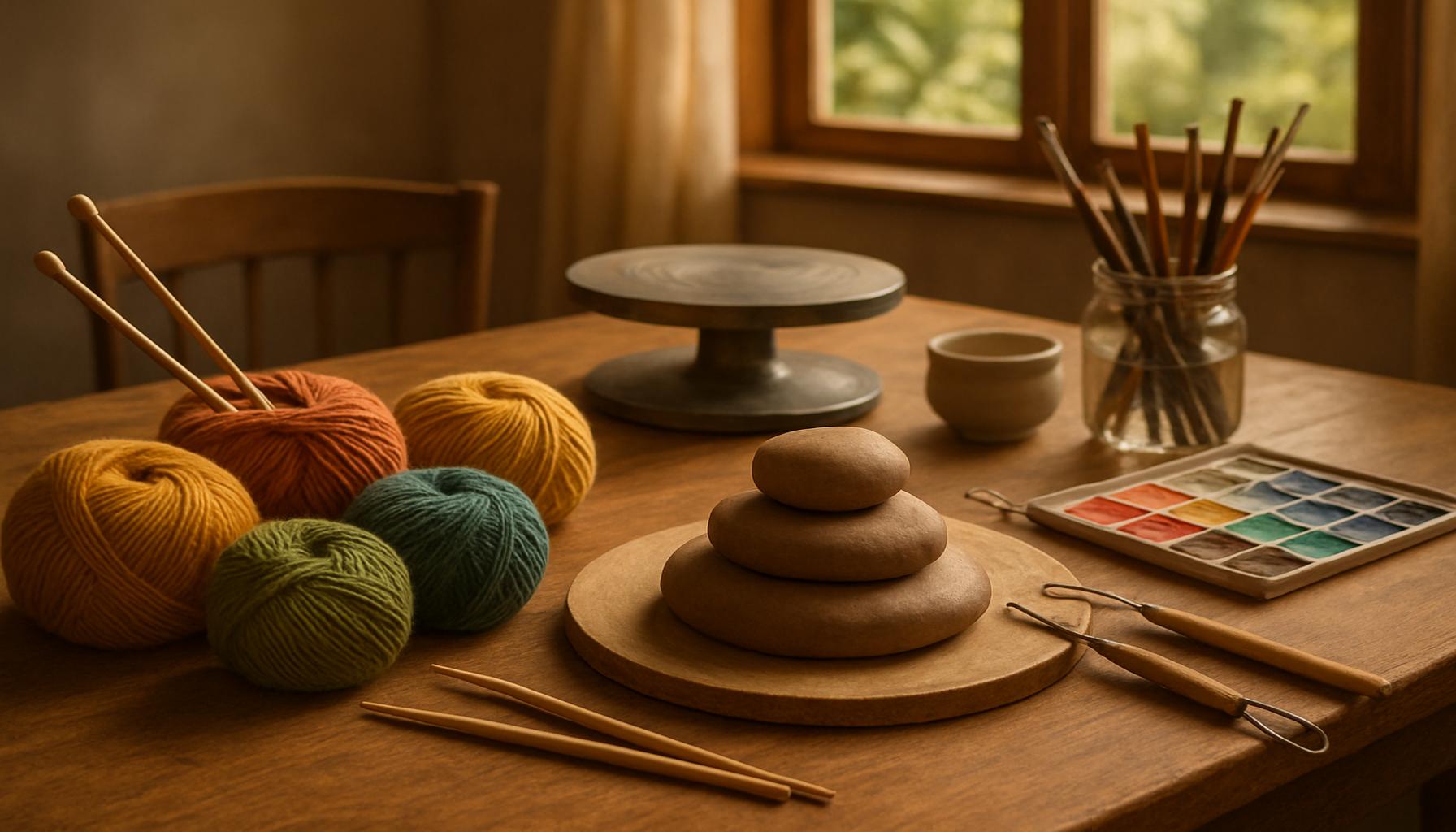
Introduction
In today’s fast-paced world, finding ways to unwind and de-stress is more important than ever. This relentless pace of modern life can lead to chronic stress, which has been linked to numerous health issues, including anxiety, depression, and heart disease. As a result, the pursuit of creative hobbies, particularly in the realm of craftsmanship, has gained significant importance. Not only do these pastimes offer pure enjoyment, but they also serve as therapeutic outlets that can foster significant improvements in mental well-being. Engaging actively in artistic activities can lead to higher levels of relaxation and enhanced emotional health.
Craft techniques such as knitting, painting, and pottery encourage mindfulness and concentration, acting as a soothing remedy to daily stressors. These activities bring with them a set of benefits that go beyond simple leisure; they can also provide a profound sense of accomplishment and personal satisfaction. Completing a craft project, whether big or small, enhances one’s overall mood and instills a deep sense of achievement. Moreover, incorporating these hands-on practices into your routine can significantly reduce anxiety, increase mindfulness, and boost creativity.
In this article, we’ll explore the Top 5 craft techniques specifically tailored for relaxation and stress relief. Each method not only serves an artistic purpose but also contributes to a calmer, more centered state of mind. From the rhythmic motion of knitting needles to the tactile pleasure of working with clay, these crafts offer more than just a method to pass the time; they open doorways to creativity, tranquility, and insight. Let’s delve into these techniques, each offering a unique approach to unwinding amidst the chaos of daily life, and see how they can help us bring peace and creativity into our lives.
Técnicas de Artesanato para Relaxamento e Redução do Estresse: Discovering the Healing Powers of Crafting
In the fast-paced and often overwhelming rhythm of modern life, finding effective methods to relax and de-stress is becoming increasingly essential. Creative hobbies have widely been recognized not only as enjoyable pastimes but also therapeutic tools that significantly enhance mental well-being. In this article, we’ll delve into the top five crafting techniques renowned for their ability to promote relaxation and alleviate stress, analyzed from five to one.
5. Knitting and Crocheting
Knitting and crocheting hold a special place in the realm of crafting for their historical roots and versatile practicality. These crafts are more than just hobbies; they are meditative practices that encourage mindfulness and relaxation. Scientific studies have shown that the repetitive nature of these activities can lead to a meditative state, fostering relaxation and reducing anxiety.
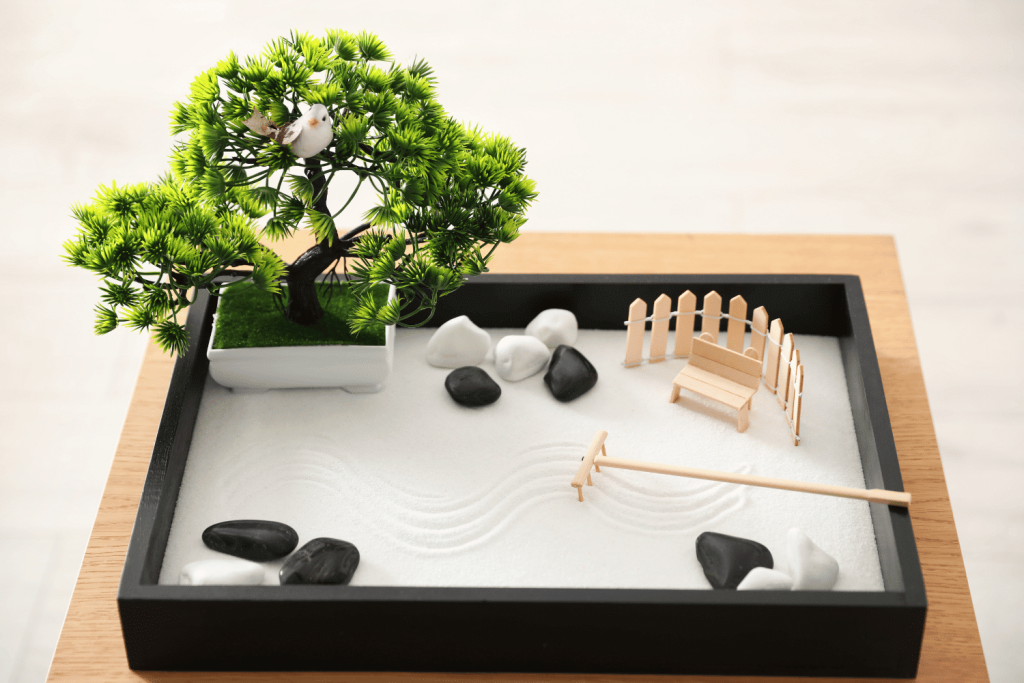
- Increased Focus: Concentrating on complex patterns diverts attention from everyday stressors and fosters mental clarity.
- Endorphin Release: Completing a knit or crochet project provides a sense of accomplishment, releasing endorphins which improve overall mood.
- Social Interaction: Participating in community knitting circles or attending crochet workshops can lead to new friendships and social engagement, enhancing happiness.
Aside from the mental health benefits, knitting and crocheting also offer a tangible outcome—beautiful wearable items or home decor. These crafts provide individuals with an accessible entry point to creativity while enriching their lives with beautiful, handcrafted pieces.
4. Painting and Drawing
From cave paintings to modern art galleries, painting and drawing have been integral to human expression for centuries. These visual arts offer expansive freedom and a powerful outlet for emotional release. Whether you prefer oil paints, watercolors, or simple graphite pencils, the process of creating visuals can magically transport you away from worries and into a soothing state of focus.
- Emotional Outlet: Painting and drawing allow individuals to express complex emotions that are often difficult to articulate in words.
- Mindfulness: As concentration on details intensifies, awareness of the present moment is heightened, reducing anxiety.
- Creative Freedom: Art offers no rigid rules, encouraging freedom and innovation in self-expression.
Engaging with art materials not only results in a creative masterpiece but also nurtures self-esteem as you discover new skills and refine your creative voice.
3. Origami
Origami, the ancient Japanese art of paper folding, goes beyond being just a creative form of leisure. It is a delicate practice that merges creativity with precision, promoting serenity through its soothing and structured process.
- Enhances Patience: As you learn origami, patience is developed due to the intricate folds and steps required to perfect designs.
- Creativity Boost: Innovating within traditional techniques fosters problem-solving and creative thinking.
- Physical and Mental Coordination: The synchronized use of hand movements and mental acuity enhances overall coordination and cognitive function.
Origami can easily be shared in social settings, turning a solitary activity into a communal one. The satisfaction of seeing a flat sheet of paper transform into a crane or lotus flower is immensely rewarding, offering visual and spiritual fulfillment.
2. DIY Home Décor
Personalizing your living environment through DIY home décor projects offers more than aesthetic enhancement; it functions as a therapeutic retreat. Crafting allows individuals to imprint their personality onto their surroundings, creating a sanctuary that fosters psychological well-being.
- Personal Expression: From crafting photo frames to upcycling furniture, your décor reveals unique aspects of your character and preferences.
- Engagement: The hands-on aspect of DIY projects provides a gratifying sense of agency and contribution to one’s environment.
- Visible Results: Continuous visible improvements in one’s space enhance mood and boost self-esteem.
DIY home décor taps into resourcefulness and innovation, challenging you to see new possibilities in everyday items and bring about real change in your living space.
1. Scrapbooking
Embodying creativity, reflection, and nostalgia, scrapbooking is an immersive craft that tops the list as a powerful method for relaxation and stress reduction. This versatile activity combines artistic flair with personal history, providing profound mental health benefits.
- Memory Preservation: Integrating photos and memorabilia into scrapbook pages brings past joyful moments into the present, invoking positive feelings.
- Creative Outlet: Scrapbooking allows full creative control over designs, empowering self-expression through choice of themes, colors, and embellishments.
- Therapeutic Reflection: Assembling and reflecting upon memorable experiences instills gratitude and reinforces personal identity.
Through the act of making scrapbooks, you craft a tangible narrative of your life’s journey, drawing joy from past experiences while enjoying the meditative creation process.
In conclusion, integrating crafting into your routine can have a transformative effect on your mental health. Whether you select knitting, painting, origami, home décor, or scrapbooking, each craft offers unique avenues for self-expression, relaxation, and stress relief. Discovering which method resonates with you can pave the way for an enriching, balanced life, steering you through modern-day challenges with creativity and calmness.
| Category | Key Features | Advantages | Disadvantages | Ideal Beneficiary |
|---|---|---|---|---|
| Knitting and Crocheting | Requires minimal equipment and can be done anywhere. | Promotes mindfulness and enhances fine motor skills. | Can cause hand strain for beginners if not careful. | Individuals seeking a repetitive task to focus on. |
| Painting and Drawing | Utilizes various mediums and is expressive by nature. | Enhances emotional expression and can be deeply relaxing. | May require more specialized materials or training. | Those looking to unleash their creativity. |
| Pottery | Involves crafting items from clay and can be tactile and sensory. | Engages multiple senses while fostering creativity and focus. | Can be messy and requires access to a kiln for firing. | People who enjoy tactile and hands-on activities. |
| Scrapbooking | Involves creating personalized layouts using photos and decorative items. | Combines creativity with nostalgia, promoting mental well-being. | Materials can be costly and space-consuming. | Individuals who cherish memories and enjoy storytelling. |
Engaging in craft techniques for relaxation and stress reduction offers a range of benefits that facilitate mental well-being. Each chosen method caters to different preferences and desired outcomes, making it crucial for individuals to find the right fit for their unique needs.Knitting and crocheting serve as excellent options for anyone looking to engage in a mindful activity. These repetitive tasks promote a sense of calmness as they require concentration, effectively allowing practitioners to focus and disengage from daily stressors. Additionally, the tactile sensation of working with yarn can create a soothing experience. However, beginners may encounter hand strain if they do not pace their practice.On the other hand, painting and drawing unleash one’s creative potential. These artistic outlets are not only a form of self-expression but also a means of emotional exploration. The freedom to create through colors and shapes can lead to a cathartic release of feelings, enhancing mental clarity. While painting may demand some basic materials or artistic skills, the creative journey continues to inspire many.Pottery provides a sensory-rich experience, engaging multiple senses—from the feel of the clay to the visual outcome of the finished product. This hands-on activity encourages focus and patience, as individuals mold their clay creations into tangible art. Yet, practitioners should be aware of the practicalities involved, such as the need for specialized equipment and facilities.Lastly, scrapbooking combines creativity and nostalgia, allowing individuals to commemorate their memories in a visually appealing manner. This method brings meaning to life experiences as each layout tells a story, and layering different materials can be therapeutic. However, those considering this activity should note the potential costs associated with materials and the need for adequate space to work.Exploring these craft techniques reveals a wealth of opportunities for relaxation and ultimately fosters a creative outlet that can combat the pressures of daily life. Each technique invites further exploration and invites those interested to delve deeper into the world of crafting for mental health benefits.
Frequently Asked Questions About Crafting Techniques for Relaxation and Stress Reduction
What are some popular crafting techniques that help with relaxation?
Many crafting techniques are known for their calming effects, with some of the most popular being knitting, crocheting, and painting. These activities not only focus the mind but also allow for a meditative state as repetitive motions and creative expressions take center stage. Other techniques such as woodworking and ceramics are also favored for their tactile engagement, inviting a complete sensory immersion that can alleviate stress.
How does crafting contribute to stress reduction?
Crafting provides a unique outlet for stress reduction by engaging both the mind and body in a focused task, which can divert attention from stressors and trigger a relaxation response. The act of creating something with your hands releases endorphins, the body’s natural painkillers, and can elevate mood. Additionally, the sense of accomplishment achieved from completing a crafting project can boost self-esteem and promote a feeling of fulfillment, further reducing stress levels.
Is crafting effective for everyone experiencing stress?
While crafting can be beneficial for many, it’s important to note that effectiveness can vary among individuals. Factors such as personal interests, preferences, and the type of stress being addressed can influence how impactful crafting is. Some people may find immediate relief in creative activities, while others may require a more structured approach or alternative methods. Exploring different crafting techniques is recommended to discover what resonates best with one’s personal tastes and needs.
Are there scientific studies supporting crafting as a stress reliever?
Yes, several studies have highlighted the positive impact of crafting on mental health. For example, research has shown that activities like knitting and drawing can activate the parasympathetic nervous system, promoting relaxation and restoring balance. A study published in the “Art Therapy Journal of the American Art Therapy Association” noted that art making can significantly reduce cortisol levels, which are often elevated due to stress. Such findings bolster the understanding that crafting is more than just a hobby; it’s a scientifically backed method for stress relief.
How can one start incorporating crafting into their routine?
Incorporating crafting into your routine can be both simple and rewarding. Begin by selecting a crafting technique that piques your interest—be it something familiar or a new venture—and allocate a specific time each week dedicated to this activity. Joining a local crafting group or community online can provide both inspiration and motivation. It is important to remember that crafting is about the journey, not the outcome, so focus on the process rather than perfection.
Conclusion
The exploration of craft techniques for relaxation and stress reduction unveils a world where creativity intertwines with mental well-being. Throughout the article, we delved into various methods such as knitting, pottery, painting, embroidery, and woodworking. Each of these activities not only engages the hands but also calms the mind, offering a meditative escape from the pressures of everyday life.
Among the top craft techniques, knitting stands out for its rhythmic nature, which parallels meditation practices, helping practitioners achieve a serene state of mind. Pottery, on the other hand, connects individuals to the tactile earth elements, allowing the molding of clay to be a metaphor for personal growth. Painting offers a vibrant avenue for self-expression, enabling individuals to pour their emotions onto the canvas, thus reducing stress and promoting relaxation.
Embroidery, with its intricate designs, requires focused attention that can help steer the mind away from anxieties, while woodworking provides a satisfying physicality that builds patience and precision. As creative hobbies, these crafts serve as potent tools for nurturing a balanced life, promoting not only mental health but also cognitive development and emotional resilience.
Ultimately, the therapeutic qualities of these crafts are undeniable. They offer a compelling argument for individuals to incorporate creative hobbies into their routine as a proactive approach to reducing stress and enhancing overall quality of life. As the conversation around mental health continues to grow, acknowledging the value of crafting as a viable option for relaxation and stress reduction opens up new perspectives and opportunities. These creative endeavors empower people to not only cope with stress more effectively but to transform it into something profoundly beautiful and deeply personal.
